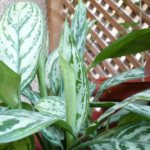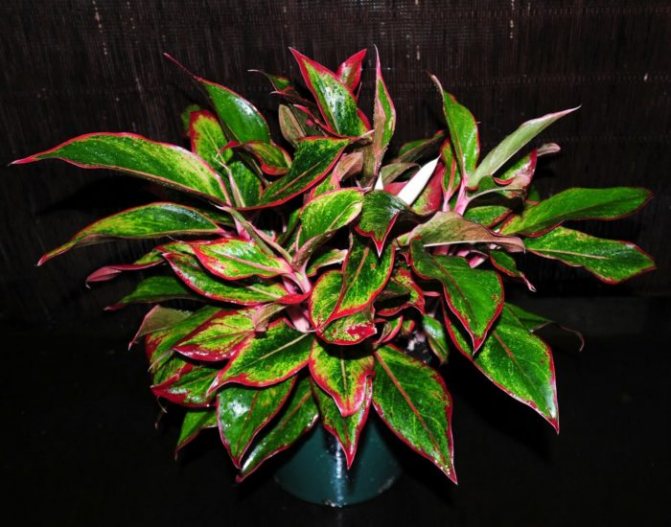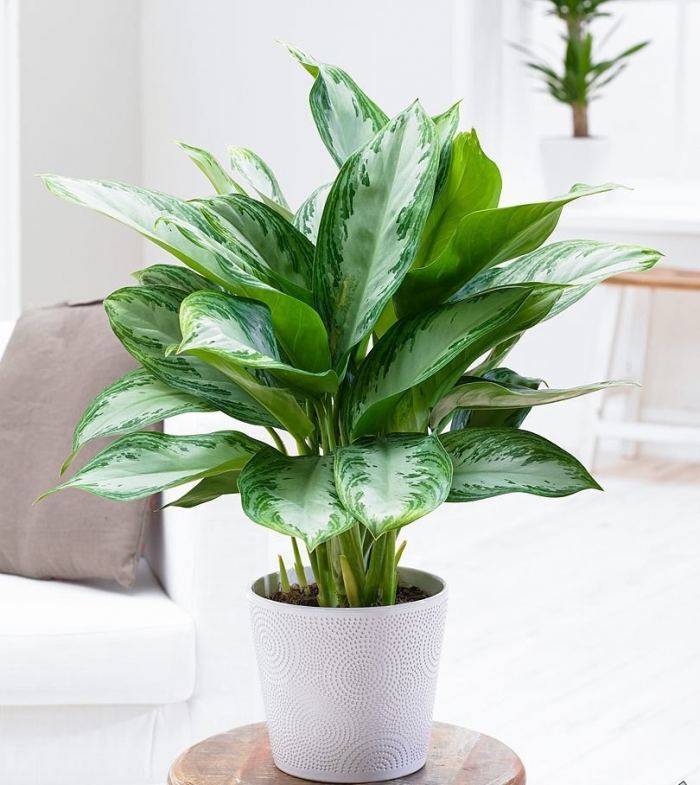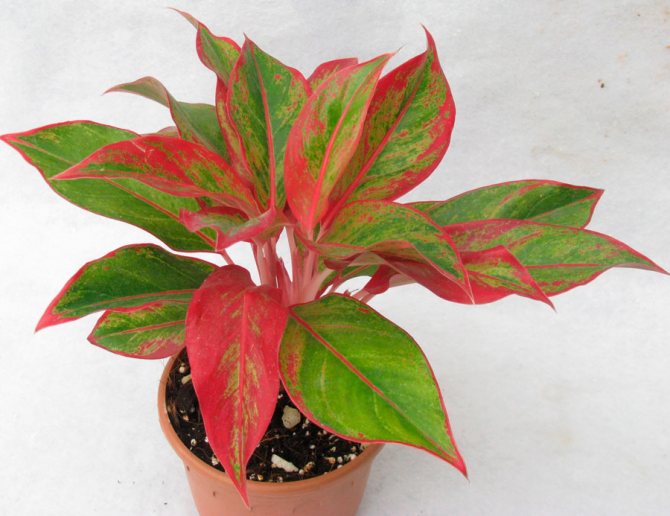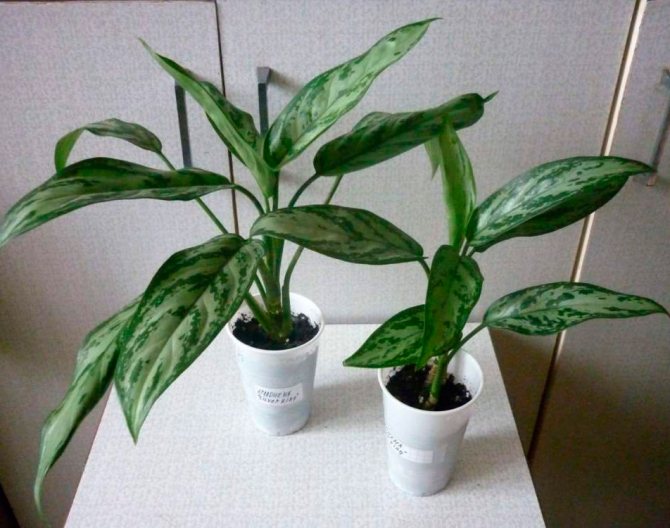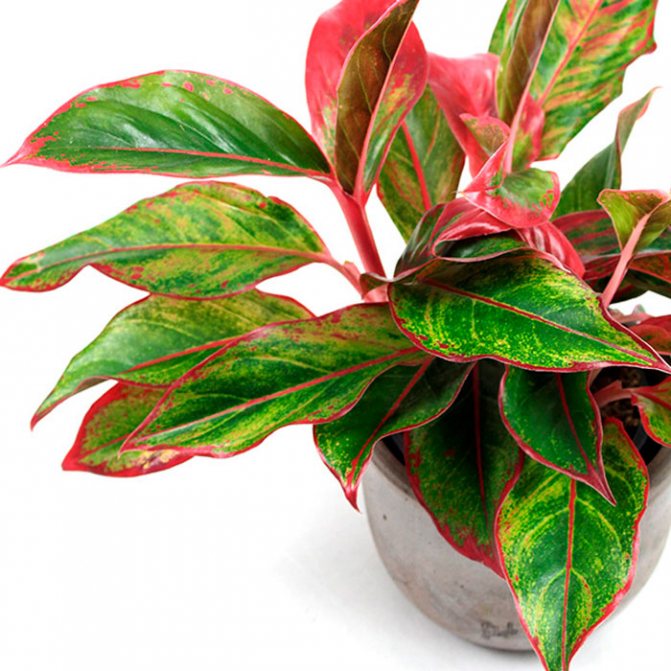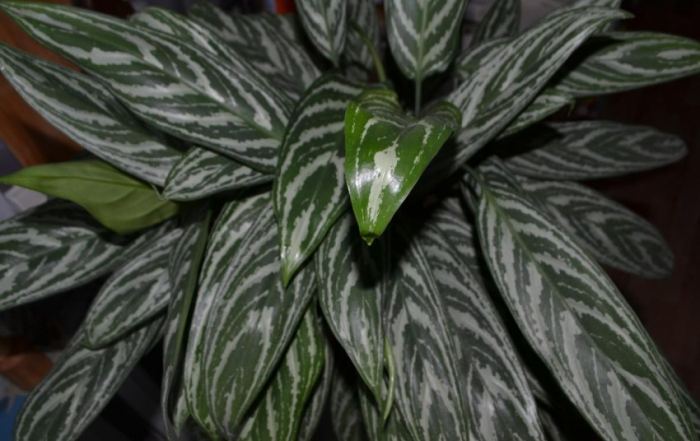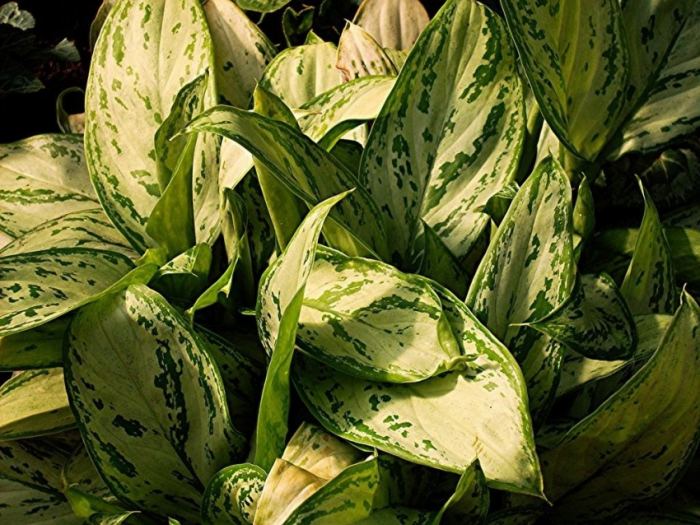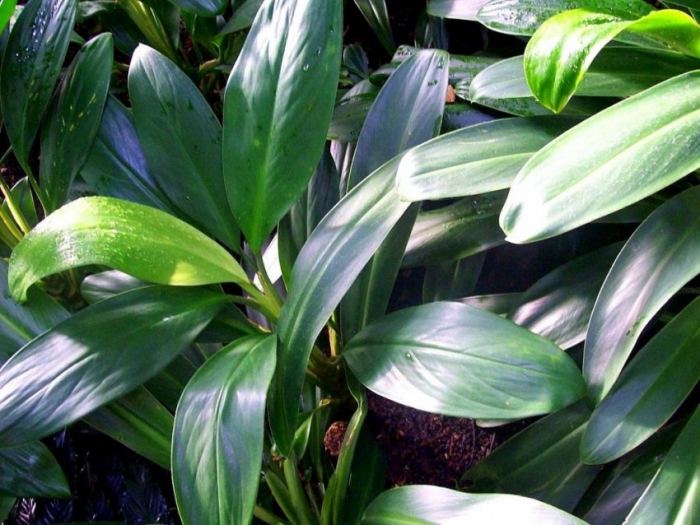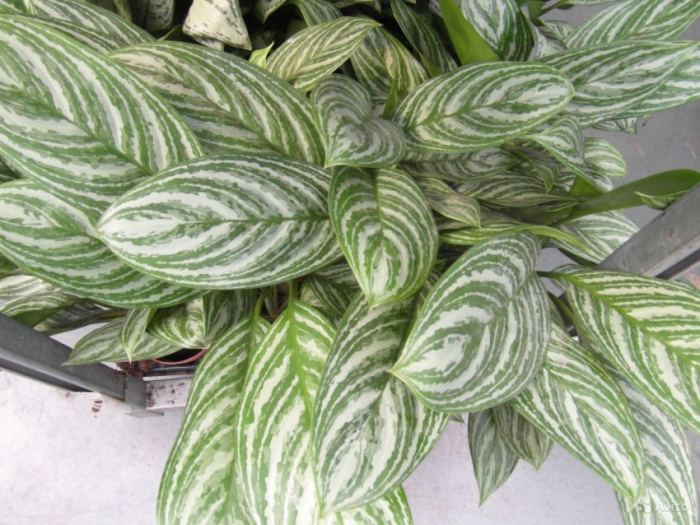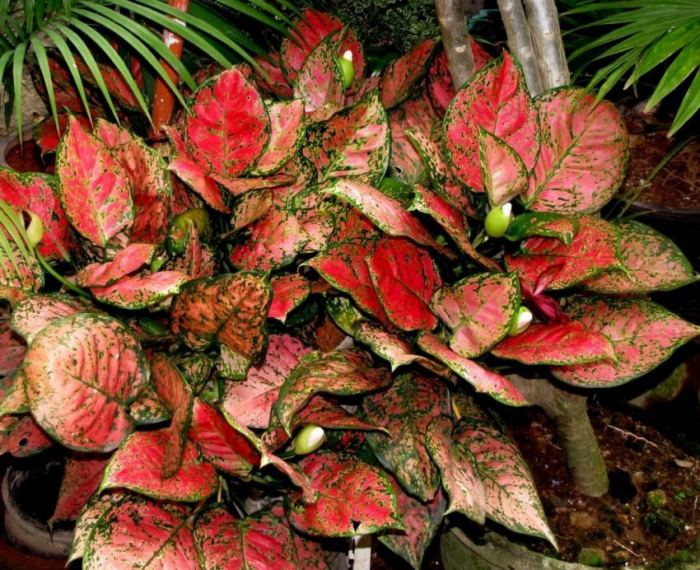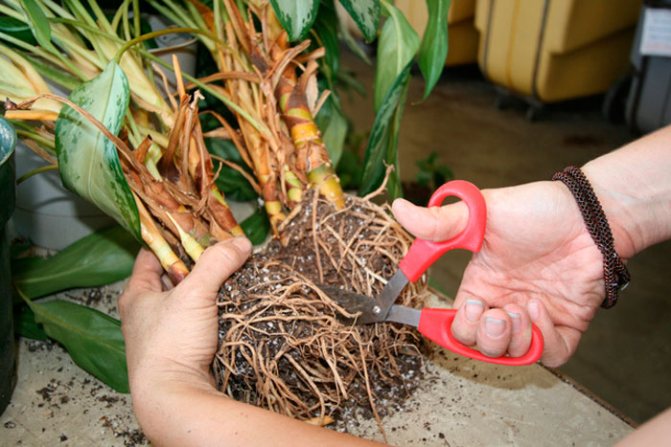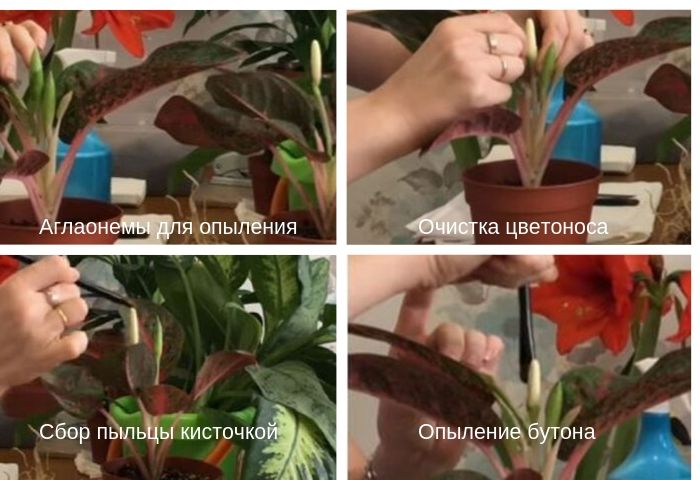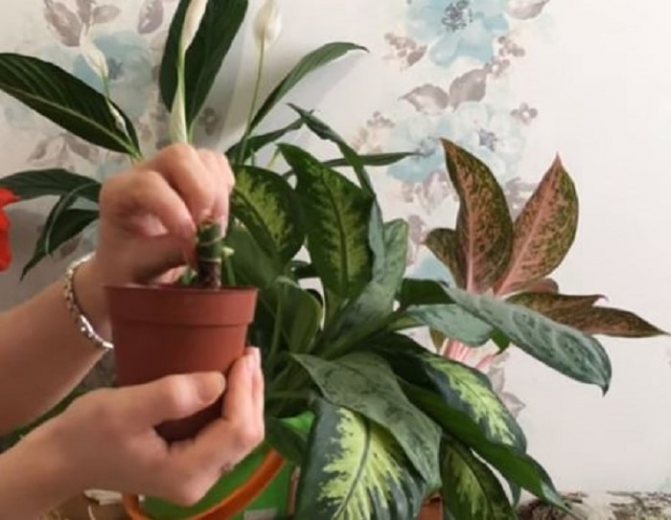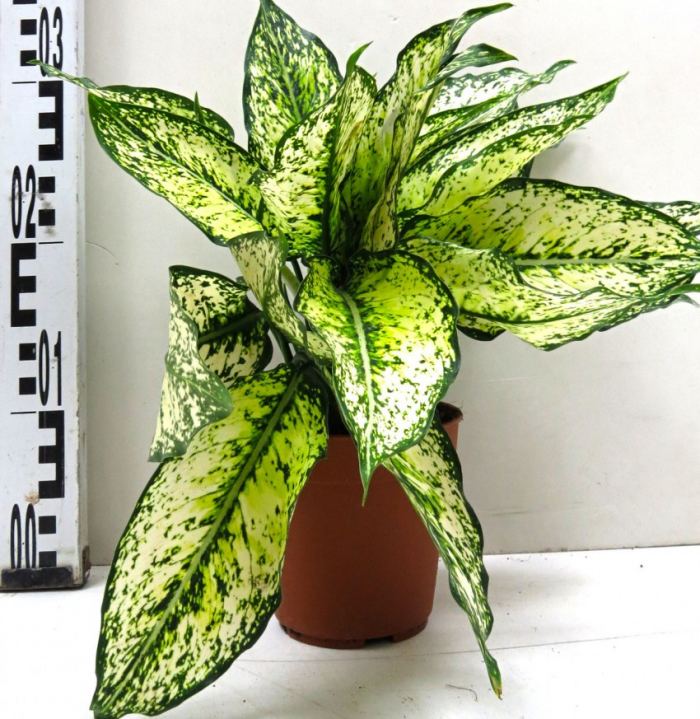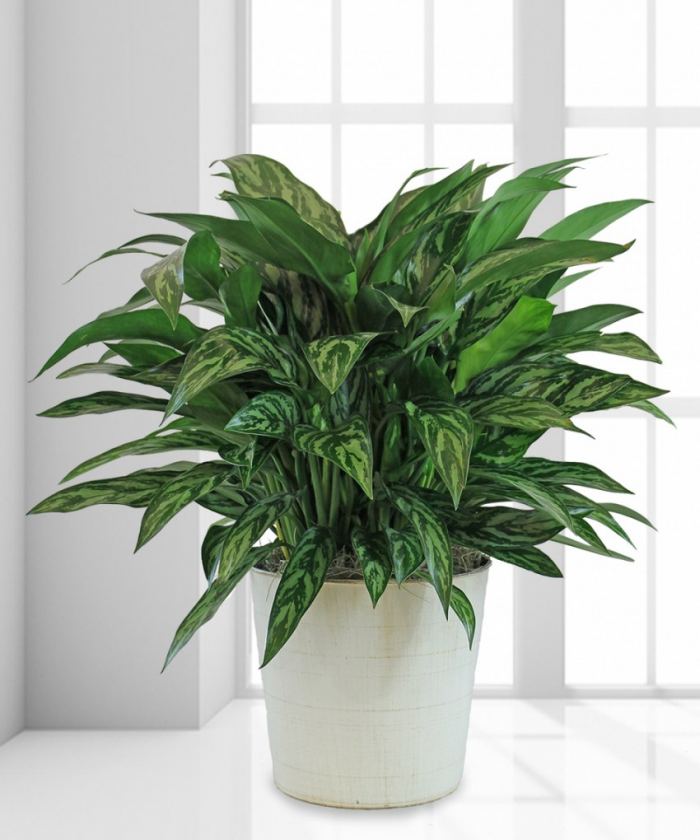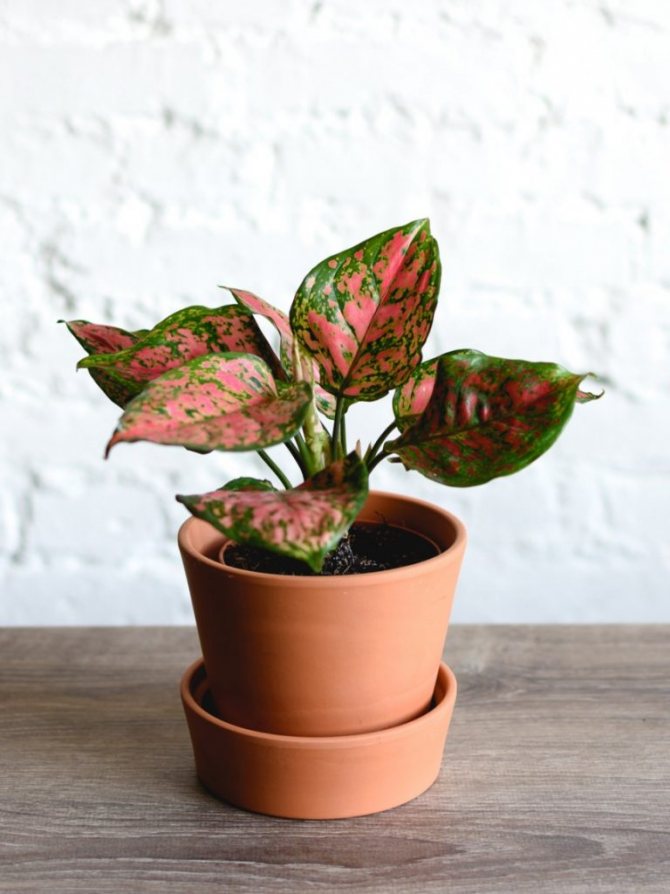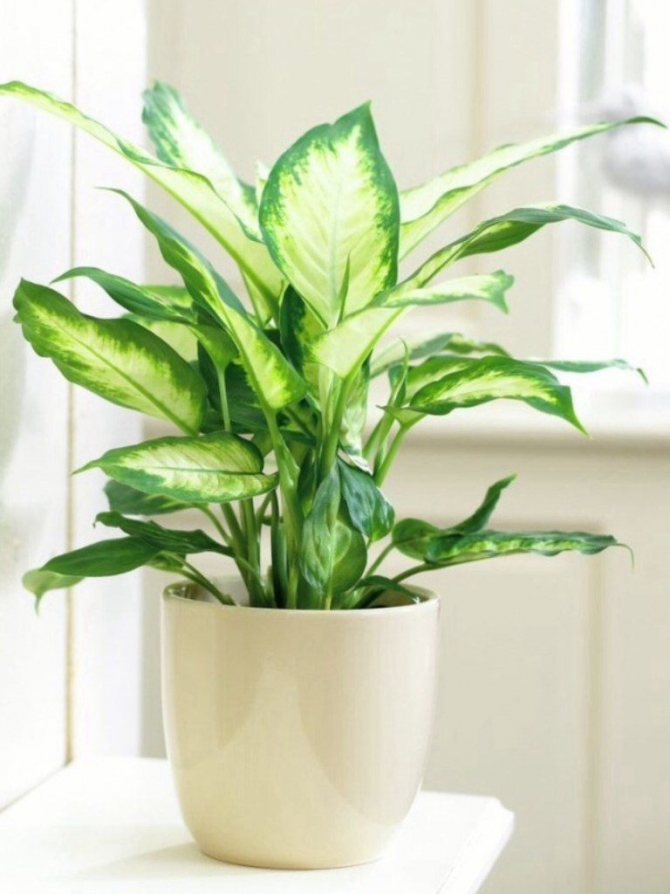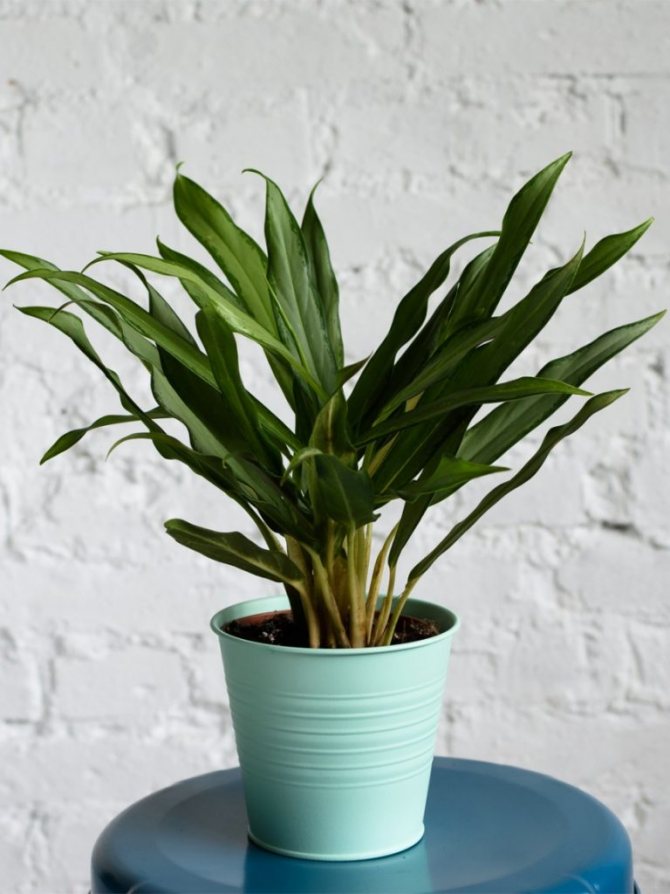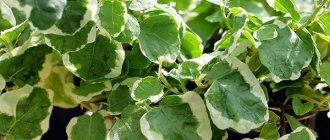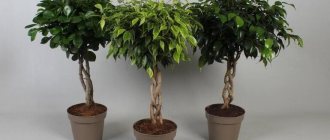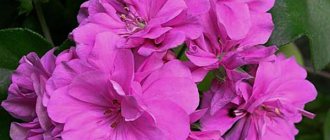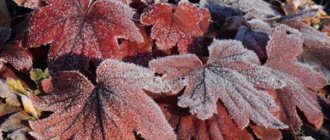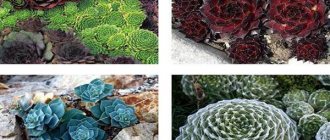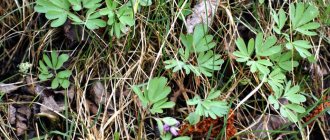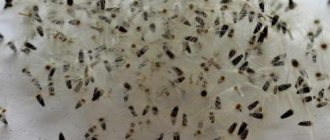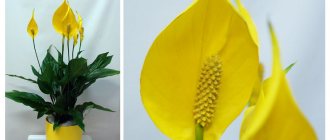Plants have always been of interest to scientists, and there is even a whole science of botany about them. For some it is just a hobby, but for others it is the whole meaning of life.
There are many outstanding people who have devoted their entire lives to studying the characteristics of various plants. Indeed, they are insanely addicting, and caring for them is a nice bonus to them. And who in general can not love these plants!
This article contains a lot of interesting and exciting information about such a gorgeous plant as Aglaonema.
Aglaonema belongs to shade-loving decorative deciduous plants. India is considered its homeland, but at home the flower grows successfully in our country. With the help of different types of aglaonem, you can decorate the shaded corners of the apartment and enjoy the fresh green leaves of different colors. The variety of varieties of this unpretentious plant allows you to do this.
- 1.1 Low-growing aglaonema
- 1.2 Medium-sized varieties
- 1.3 High aglaonema
- 2 Aglaonema: home care, photo
2.1 Temperature and humidity
- 2.2 Transfer
- 2.3 Watering
- 2.4 Top dressing
- 3.1 Dividing the bush
Types and varieties of aglaonema with a photo
Outwardly, aglaonema looks like a small bush, the height of which can reach up to 50-80 cm... Heart-shaped or elongated leathery leaves sit tightly on its erect or horizontal trunk. They can be of a wide variety of shades of green.
Under favorable conditions, mature plants can bloom. The aglaonema flower is an inflorescence-ear, which is usually wrapped in a white or greenish veil.
All aglaonema by the height of the bush are divided into three groups, each of which is distinguished by a variety of varieties.
Stunted aglaonema
Plants grow up to only 25 cm, and are distinguished by drooping or creeping stems. Among this type of plants, one can distinguish the three most famous varieties:
- Aglaonema short-covering differs in strongly elongated oval green leaves. There is a white vein in the center of each leaf. The plant grows slowly and forms few leaves. Therefore, in order to get a beautiful decorative bush, several seedlings are planted in one container.
- Aglaonema ribbed is a very small bush with a branching trunk of an underground or creeping shape. Heart-shaped leaves can be white or green in color with various specks and stripes. A plant of this species, just before the New Year, forms an inflorescence that grows up to ten centimeters and blooms for only a few days.
- Aglaonema rounded is distinguished by heart-shaped leaves of an unusual black-red color. Bright pink stripes are drawn along the entire length of the sheet.
Medium-sized varieties
On the straight trunks of low bushes of medium-sized aglaonemas, long leaves are located, growing up to 30 cm in length. Popular varieties:
- Aglaonema Maria is a bush with dense foliage of rich green color. The plant is very shade-tolerant and can even grow indoors with artificial lighting.
- The Treiba variety is distinguished by small leaves that grow only up to 15 cm.They have a greenish color and a silvery pattern.
- Aglaonema is modest in height, reaching 50 cm. Its rounded leaves have convex veins and sharp tips. They grow in length up to 20 cm.
- The Silver Queen variety grows up to 40 cm and requires good lighting, since the surface of its leaves is silvery-blue.
High aglaonema
The varieties of this group are obtained on the basis of shade-tolerant species of Aglaonema, therefore they are very popular. They look great both as single plants and in large-sized compositions. The most famous of them:
- Pattaya Beauty is a very elegant plant with slender, slender stems. On the surface of large leaves, green edges and a light gray center are clearly expressed. With age, the color of the leaves becomes more and more dark. Pattaya Beauty can grow in rooms with poor lighting, temperature fluctuations and low air humidity. The lower leaves fall off over time, and the plant becomes like a palm tree.
- Aglaonema Friedman can grow up to one and a half meters. Its wide, large leaves have wavy edges. There are silvery spots in the middle of the leaves, and dark green specks along the edges.
- The Silver Bay variety is an impressive plant, the trunk of which will grow more than one meter. The plant branches from the roots, so the trunk is bare very slowly, and the bush remains lush for a long time. The long leaves of the plant, pointed upwards, grow up to 30 cm. Gray spots are located along their entire surface. A young plant has leaves of a light green hue, which become darker with age. The Silver Bay variety differs in that it is cold-resistant.
Aglaonema: home care, photo
The plant prefers diffused lighting and slightly shaded areas. Therefore, when deciding on the choice of a place for an aglaonema, you should not install a pot with a plant on the southern windowsills in direct sunlight.
In general, caring for a decorative bush at home is quite simple, but still has its own nuances.
Temperature and humidity
In the summer, the air temperature for aglaonema should be within 20-25 degrees, and in winter, the plant is best kept in cooler conditions.
Aglaonema loves humid air, so it requires regular spraying. To prevent the leaves from drying out, the bush should be kept away from heating appliances. From time to time, the plant can have a shower. Under these conditions, the leaves will always be shiny and bright.
Transfer
A flower brought from a store in a transport pots requires transplanting into a pot suitable for it and an earthen mixture. It is best to do the transshipment, which should be done after the plant has adapted to new conditions.
Aglaonema soil should be loose and contain the following components:
- sod land;
- leafy ground;
- peat;
- sand.
A large amount of drainage is also required. A new pot is chosen two to three centimeters in diameter and height larger than the previous one.
In the future, when caring for aglaonema, it will be necessary to transplant young plants into a more spacious container every spring. Adult bushes are transplanted every two to three years.
Watering
Aglaonema loves moist soil without stagnant water. The abundance and frequency of watering depends on the conditions of its maintenance. In cool rooms, the plant is rarely watered. Before watering, be sure to check the topsoil... If it is dry, then the plant can be watered.
Water for irrigation must be settled and at room temperature. Ideally, it should be boiled.
By the leaves of the flower, you can find out about the quality of watering. Spots or yellow leaves indicate that the water is likely to contain a large amount of chlorine. If the leaves are shriveled and dry, then the amount of moisture must be increased.
Top dressing
Aglaonema care involves feeding the plant regularly. Twice a month should be carried out fertilizing with mineral fertilizers, which must include trace elements, potassium, phosphorus and nitrogen.
Foliar dressing will have a good effect on the development and decorativeness of the leaves. It is recommended to spray the leaves with light nutrient solutions one day after watering. If the sun falls on the plant, then it is better to do this in the evening or in cloudy weather. This will keep the leaves from burning.
In order for the aglaonema to bush better, when caring for it, you need to prevent it from blooming by cutting off the grown flowers. Such actions will help provoke the appearance of new buds, the bush will begin to grow and become beautiful and lush.
Reproduction of aglaonema
Home plant can be propagated in three ways:
- dividing the bush;
- cuttings;
- sowing seeds.
Dividing the bush
This is the easiest way to reproduce aglaonema, which requires only careful handling of the plant. In the process of growing aglaonema, you can notice that the bush grows, and young shoots are formed on it. They can be separated and dropped into separate containers. Seedlings with healthy leaves and a well-developed root system should be chosen. Young plants planted in pots are covered for the first time plastic bag or can... Caring for them consists in regular spraying and watering.
Propagation by cuttings
For propagation of aglaonema, lateral and apical shoots, trunk segments are used. In order for the cuttings to take root quickly, a section of the trunk must have several leaves. Places of cuts are sprinkled with finely crushed coal and dried.
The cuttings are planted in a prepared light earthy mixture and watered. For better rooting, they can create greenhouse conditions by covering the container with the planted cuttings with polyethylene. Further care consists in keeping the soil moist and airing the seedlings.
Seed reproduction
Using this method, in a fairly short time, you can get a large amount of planting material... However, seedlings will grow much more slowly than when aglaonema propagates by shoots.
The seeds can be purchased or harvested from the berries of a home plant. It is necessary to make sure that the berries are well separated from the cob and have a deep red color. From the berries, you immediately need to remove the seeds, rinse and dry them. The germination of such seeds is good, but decreases during storage. Therefore, it is recommended to sow prepared seeds immediately.
Possible growing problems
The appearance of the plant and its health can be affected by unsuitable conditions for aglaonema and improper care.
Brown spots on the leaves and poor plant growth indicate a low temperature of the water for irrigation or its hardness. In this case, the water must be defended, and to eliminate hard impurities, add citric or oxalic acid.
Dried edges of leaves and their deformation indicate too dry indoor air. The plant should be sprayed as often as possible and sometimes rinsed in the shower.
If the leaves begin to turn yellow, then the reason may be over-watering the plant or keeping it at too low temperatures. Therefore, the flower must be rearranged to a warmer room or watering should be limited.
Of the pests for aglaonema are dangerous thrips, whiteflies, aphids, mealy worms and spider mites. The leaves of the plant should be inspected regularly, especially if they begin to dry out, deform or fall off. If pests are found, the bush must be treated with special chemicals.
Aglaonema is very unpretentious, so it is quite easy to grow it at home. When you create comfortable conditions for the plant, you will get a fluffy bush with large and beautiful leaves.
Aglaonema plant
Brief description of the plant
Evergreen herbaceous plants have erect short fleshy stems. Young aglaonemas have almost no discernible stem. Adults release a short stalk.
Long or short petioles are dotted with dense, leathery, whole-cut leaves that have a broad-ovate or oblong-lanceolate shape. The color of the foliage depends on the type and variety of the plant. In the upper leaves, inflorescences with a green-white veil are formed. Inflorescence cobs can be thin, cylindrical, thick, clavate.
Within six months, the fruits ripen - juicy, bright orange berries with a ruby sheen. The fruits are oblong with one seed inside.
Aglaonema is grown in greenhouses with moderate air temperatures as an ornamental deciduous plant. But, most often the flower can be seen on the windowsills of houses when it is grown at home.
Home care for aglaonema
We list the necessary conditions for the successful growth of aglaonema:
This plant grows well only in warmth and is intolerant of drafts. The optimum temperature for its growth is not less than 17 ° C, and not more than 25 ° C. The most comfortable environment for a slide with a flower is near the aquarium or humidifier.
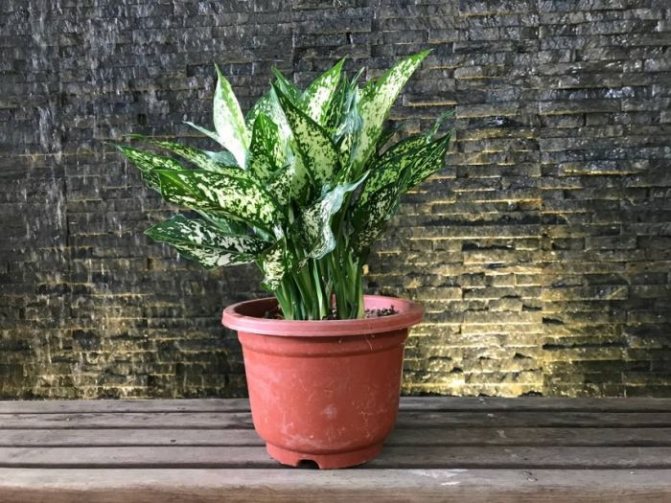
For aglaonema, a high level of humidity is required. In the hot season, you need to spray the leaves and regularly remove dust from their surface. Important! You can not apply a special solution to the leaves to give shine.
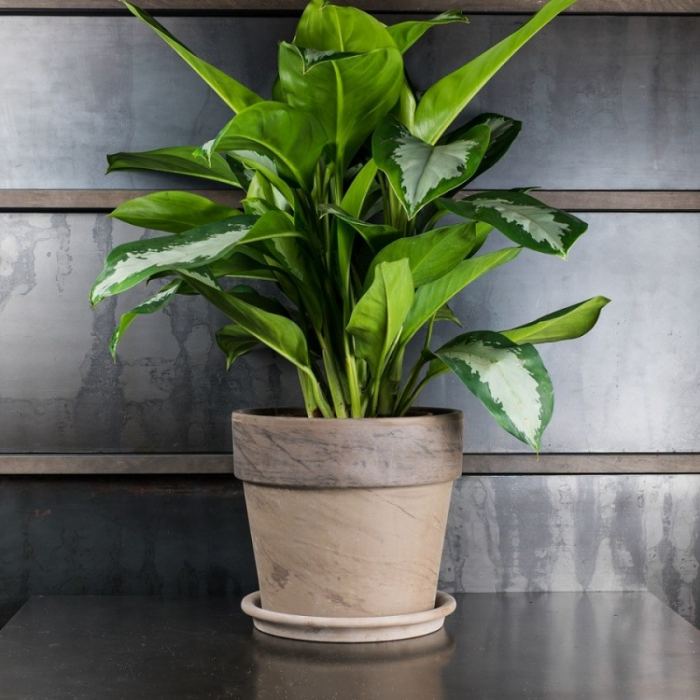

Top dressing
Spring, summer and the first months of autumn are best suited for top dressing. Preference should be given to substances containing nitrogen, but they need to be added only according to the instructions, and not more.


The feeding frequency is about twice a month. Otherwise, you risk harming the plant instead of strengthening it. The cold season is not suitable for feeding.


The best soil for aglaonema is a mixture of peat, sand, and leafy soil. The soil must be able to pass water easily for effective irrigation.
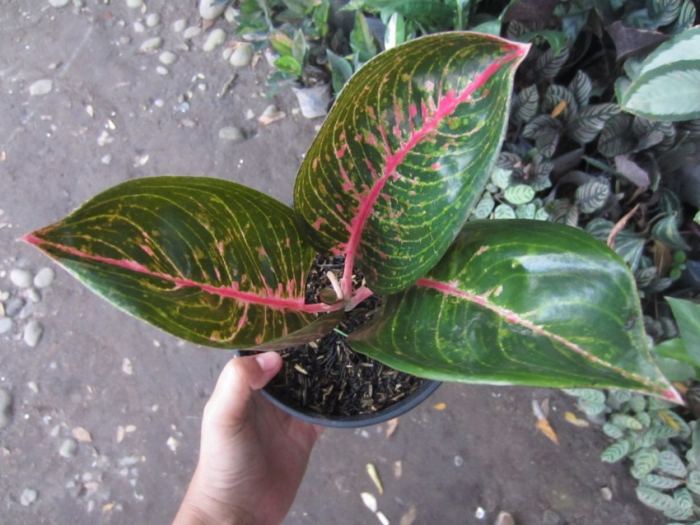

Diseases
Thrips, scale insects, aphids - all these indoor parasites pose a threat to the plant. From fungal diseases, a disease such as gray rot is isolated. Fungicidal preparations will help to cope with rot.
If the air in the room is not sufficiently humidified, and the temperature reaches high levels, a new threat may appear for the plant - a spider mite. Carefully inspect the stem and leaves in order to detect the appearance of parasites in time.
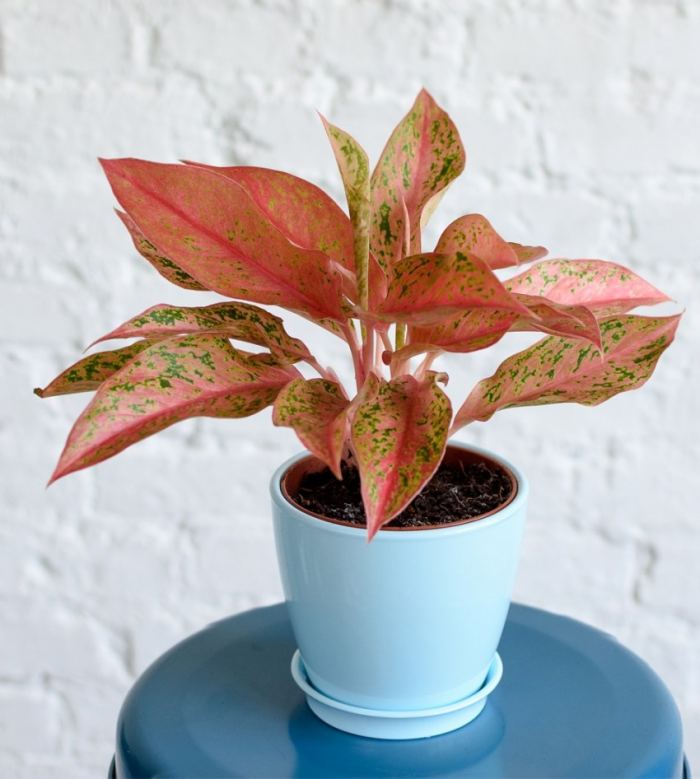

Following the general recommendations for creating adequate conditions for the plant will help you prevent unpleasant consequences.
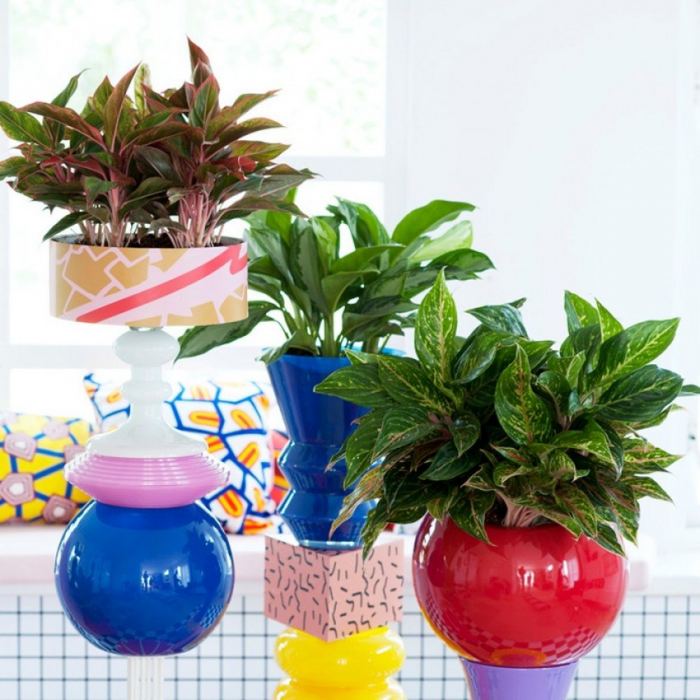

Useful Tips
Since the main advantage of this flower is its shade tolerance, it is used to decorate halls, lobbies, hallways with artificial lighting. You can find out if there is enough light for the aglaonema by the angle of deviation of the leaves from the stem. If they move away from it at an angle close to a straight line, the lighting is optimal. When pungent (less than 45º) forms, the plant suffers from excess light.
Would you like to get yourself an aglaonema? Leave your review
In direct sunlight, brown burns appear on it, the leaves become whitish.
To stimulate the growth of the bush, prune the lower old foliage regularly.
Wipe the leaves with a soft, damp cloth. Dust settles on them, and spider mites appear. Despite their microscopic size, these pests lead to the death of the flower. Compact units can be rinsed under running warm water.
Breeding rules
Reproduction. The plant propagates using cuttings, seeds and detachments from plants. We will tell you more about the rules for plant propagation below.Aglaonema is not easy to reproduce, since it grows and adapts to new conditions for a long time. Freshly planted aglaonema will not soon begin to bloom and bear fruit.
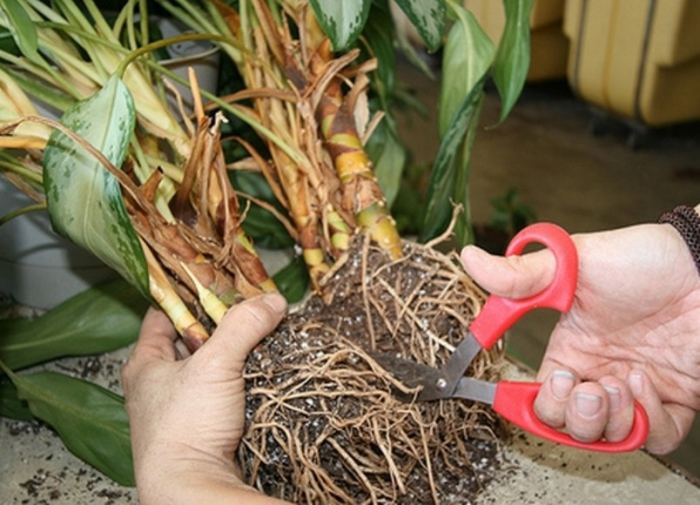

The best solution for replanting a bush is to separate the shoots with 4-5 leaves. You can do the separation after the branches appear on the stem.
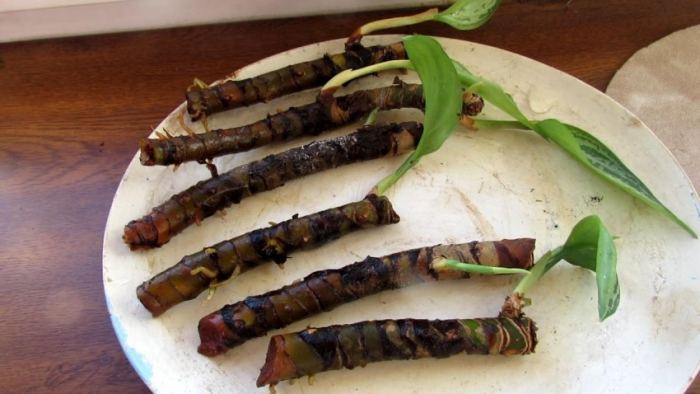

The top of the aged plant can also be cut off and used as a cutting. After 2-3 weeks, the cutting will start to take root. By the way, the plant needs to be propagated only in the warm season.
- Ktenanta - types, cultivation features and instructions for home care. 110 photos of plants
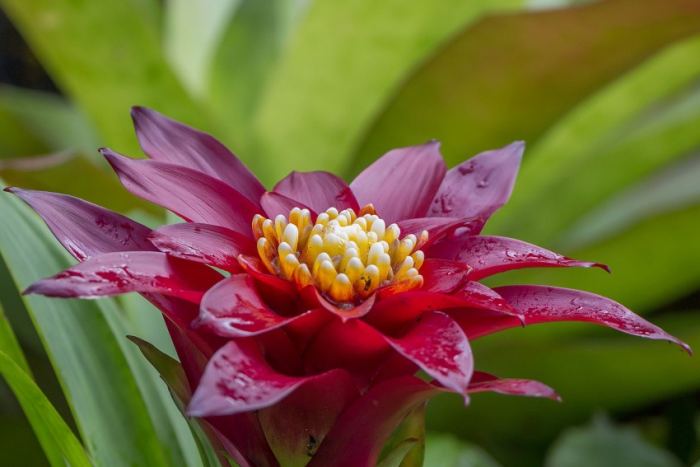

Guzmania: planting, transplanting, reproduction of different species and the rules for watering the plant. 135 photos of a flower and video tips for caring for it
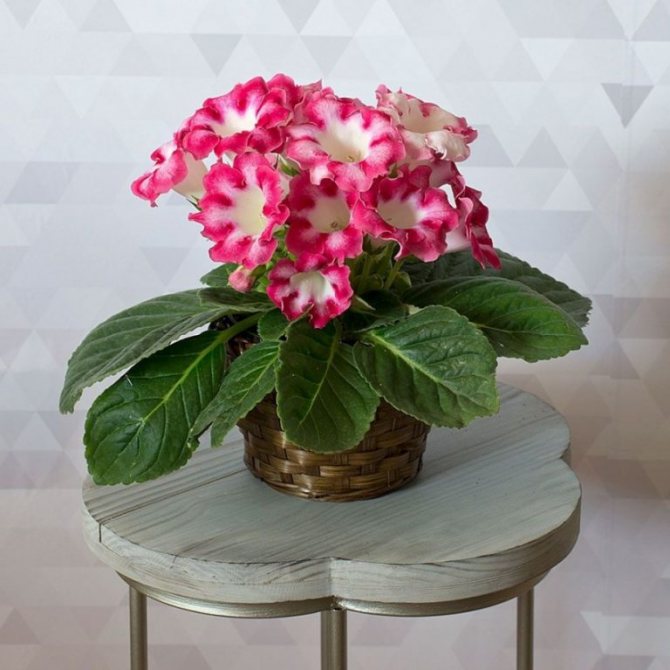

Gloxinia: growing and caring at home. 165 photos of a flower and the rules for planting it
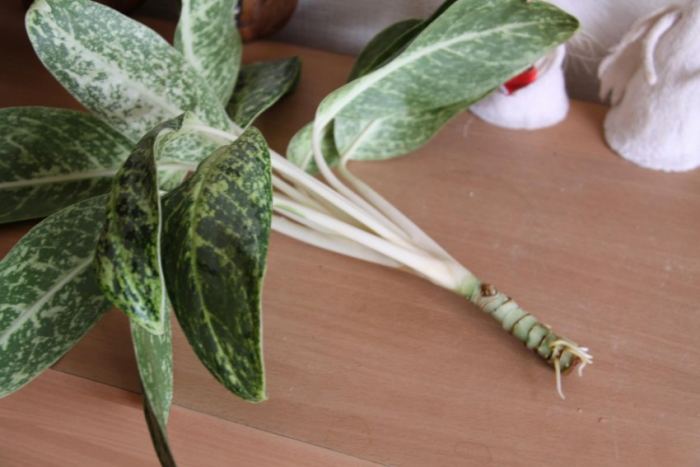

Let's talk a little about sowing seeds. Experienced and persistent farmers will prefer this option. The first month of spring and the last month of winter are the best times to place seeds in light soil. After planting, you need to moisten the ground and cover with glass.
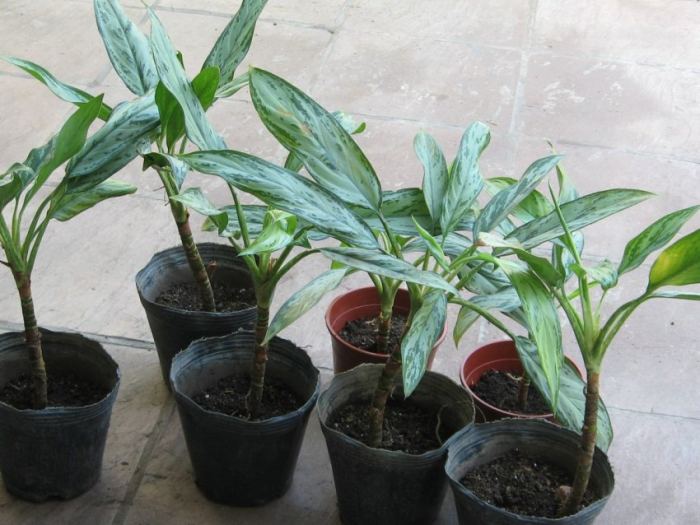

It is necessary to constantly maintain the moisture of the soil and remove the glass daily to ventilate the soil. It is necessary to shade the seed pot a little.
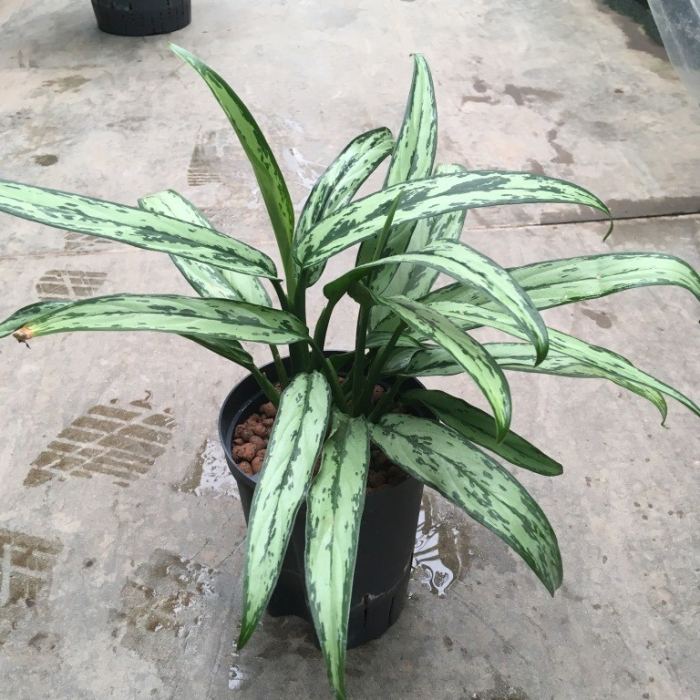

Florist reviews
I have known aglaonema for a long time. First there was Silver, with green and white leaves. Then she grew old and ugly, the trunk began to grow bald and woody. As a result, I got rid of it when I moved. But for a long time without it I could not ... Still, a beautiful and unpretentious plant. Aglaonema with red leaves was purchased at the exhibition - the variety is called Crete (Crete). Couldn't pass by - super beautiful. Now she is about a year old. She tolerates our dry apartment climate and the south side and feels pretty good at the same time. I water every other day in summer, in winter - after 3. I wipe leathery leaves and rarely spray. Recommended for beginners and those who have no time to care for plants!
Maya5
This cute flower appeared in my house by accident, but immediately struck me with its unusual color. He was very unpretentious both in watering and in care ... Always vigorous and persistent. And after a couple of months he gave me a bunch of flowers that look like little calla lilies ... Aglaonema grows like a bush, with a bunch of shoots ... Six months later I decided to plant it in a larger pot and plant a couple of children ... My bush was renewed in a new pot ... So he lived with me for almost seven months, but for some reason I did not see flowers on it ... And then I decided to do what, in my opinion, was right - I again transplanted it into a smaller pot ... And after a couple of months my girl again pleased me with her flowers.
sunalika
I have several Dutch aglaonems. They have been growing well for several years already. I just washed the roots carefully, without damaging it, under warm water from purchased land and planted it in fresh one. Watered the next day.
ZLAtik
Aglaonema is the perfect plant for creating coziness at home and in the office, whichever variety you choose. She will remain in the shadows, hiding only from the rays of the sun. Aglaoneme will not be able to hide from the admiring glances of those around it.
Rate the article:
- 5
- 4
- 3
- 2
- 1
(0 votes, average: 0 out of 5)
Share with your friends!
Transfer
Young bushes need to be transplanted into new pots annually to create a comfortable environment. Adult plants do not need constant soil renewal and feel great in cramped pots, so a plant can be transplanted every 3-4 years.
Too large pots are also not suitable for a bush: in this case, excess moisture can stagnate in the soil. When the right conditions are created, your aglaonema will bloom flowers that will delight you for a long time.



